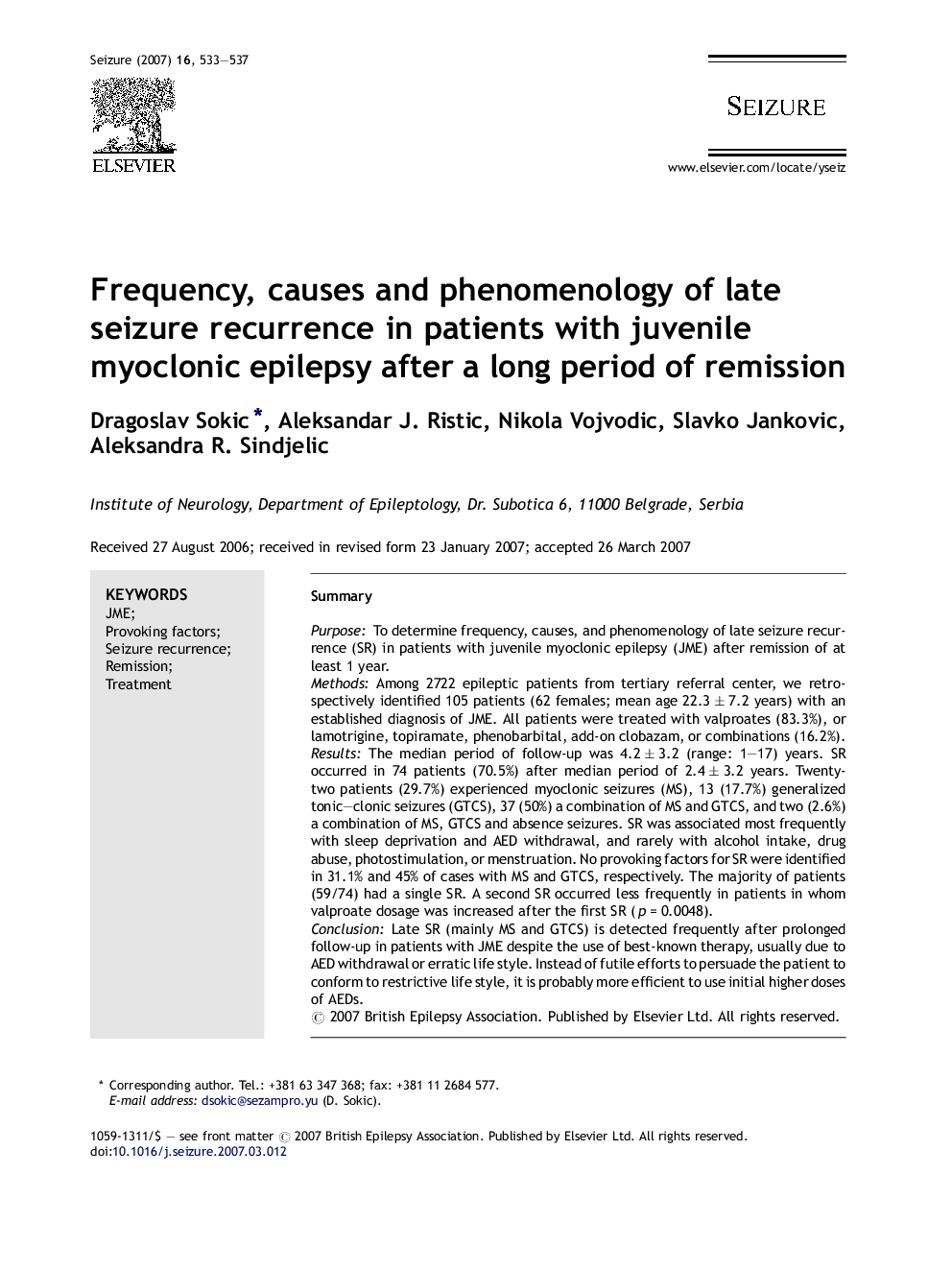| کد مقاله | کد نشریه | سال انتشار | مقاله انگلیسی | نسخه تمام متن |
|---|---|---|---|---|
| 340784 | 548362 | 2007 | 5 صفحه PDF | دانلود رایگان |

SummaryPurposeTo determine frequency, causes, and phenomenology of late seizure recurrence (SR) in patients with juvenile myoclonic epilepsy (JME) after remission of at least 1 year.MethodsAmong 2722 epileptic patients from tertiary referral center, we retrospectively identified 105 patients (62 females; mean age 22.3 ± 7.2 years) with an established diagnosis of JME. All patients were treated with valproates (83.3%), or lamotrigine, topiramate, phenobarbital, add-on clobazam, or combinations (16.2%).ResultsThe median period of follow-up was 4.2 ± 3.2 (range: 1–17) years. SR occurred in 74 patients (70.5%) after median period of 2.4 ± 3.2 years. Twenty-two patients (29.7%) experienced myoclonic seizures (MS), 13 (17.7%) generalized tonic–clonic seizures (GTCS), 37 (50%) a combination of MS and GTCS, and two (2.6%) a combination of MS, GTCS and absence seizures. SR was associated most frequently with sleep deprivation and AED withdrawal, and rarely with alcohol intake, drug abuse, photostimulation, or menstruation. No provoking factors for SR were identified in 31.1% and 45% of cases with MS and GTCS, respectively. The majority of patients (59/74) had a single SR. A second SR occurred less frequently in patients in whom valproate dosage was increased after the first SR (p = 0.0048).ConclusionLate SR (mainly MS and GTCS) is detected frequently after prolonged follow-up in patients with JME despite the use of best-known therapy, usually due to AED withdrawal or erratic life style. Instead of futile efforts to persuade the patient to conform to restrictive life style, it is probably more efficient to use initial higher doses of AEDs.
Journal: Seizure - Volume 16, Issue 6, September 2007, Pages 533–537